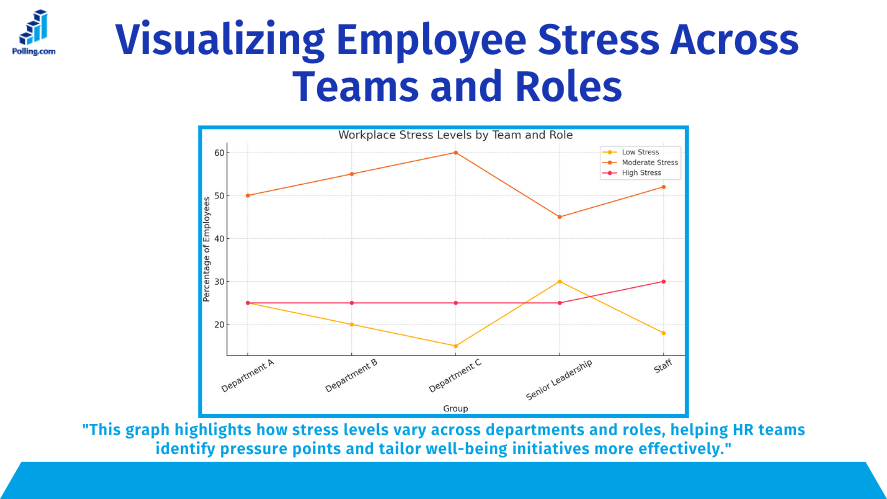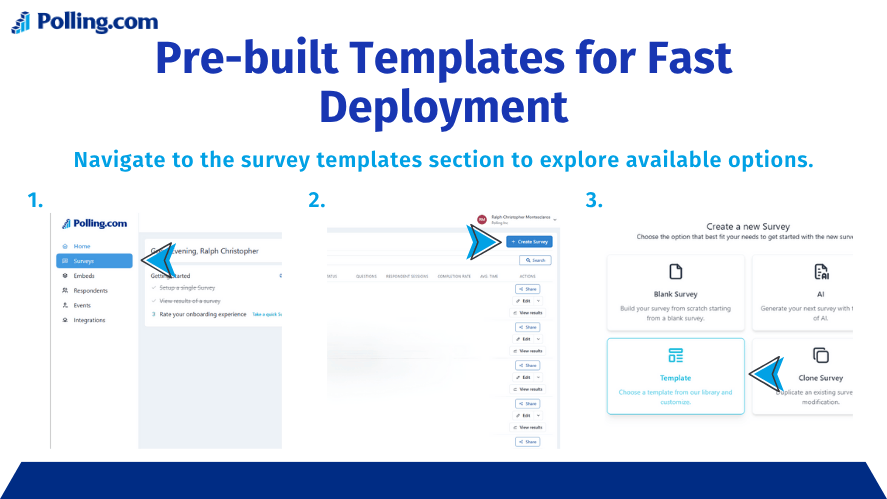
Top Employee Job Satisfaction Survey Ideas for Boosting Retention
An employee job satisfaction survey is one of the most valuable tools HR teams and organizations can use to understand how team members feel about their work, leadership, and overall experience in the workplace. In 2025, as hybrid work becomes the norm and employee expectations continue to evolve, it is more important than ever to design the right survey one that can significantly influence retention strategies, morale initiatives, and overall productivity.
Are you wondering how to design a data-driven survey that actually leads to change? Do you want to know the exact questions that top companies use to boost engagement? You’re in the right place.
Let’s explore why employee surveys matter, how to create them effectively, and which employee job satisfaction survey questions you should be asking in 2025.
Why Conduct an Employee Job Satisfaction Survey?

Running an employee job satisfaction survey is more than a checkbox activity. When done right, it can unlock powerful insights into the emotional pulse of your workforce. Here’s what makes them crucial in today’s employee workplace climate.
Boosting Retention and Reducing Turnover
High turnover rates are costly. A recent Gallup report found that U.S. voluntary employee turnover costs companies hundreds of billions each year. By leveraging employee engagement survey data, HR teams can detect early signs of dissatisfaction and take proactive steps to prevent resignations.
Employees who feel heard are 4.6 times more likely to perform at their best and stay.
Identifying Hidden Workplace Issues
Although not all issues are visible on the surface, thoughtful survey data gathering allows companies to uncover hidden problems such as discrimination, lack of recognition, or workplace stress.
These insights offer real-time diagnostics to help organizations find workplace issues and fix them before they grow into crises.
Enhancing Team Morale and Productivity
Research shows that employees who have confidence in their leadership tend to be up to 74% more engaged in their work. By using feedback loops from an engagement staff survey, employers can improve transparency, communication, and overall morale.
Best Practices for Designing an Effective Employee Job Satisfaction Survey
Before you launch your survey, it’s vital to follow these best practices to maximize participation and honesty.
Define Clear Objectives
Before you begin crafting your employee survey, it’s essential to ask: What do you want to learn? Are you aiming to evaluate management effectiveness, assess workplace culture, or review compensation and benefits?
Clearly defining your objectives from the start helps streamline your entire survey process. Moreover, it ensures that each question directly supports actionable outcomes. Without this clarity, your survey may gather scattered data that’s difficult to interpret or apply meaningfully.
By establishing specific goals, you not only set the foundation for a focused and impactful employee job satisfaction survey, but you also pave the way for real organizational improvements.
Keep it Anonymous to Encourage Honesty
Anonymity is critical in a job engagement survey. Employees are more likely to give honest feedback when they know it won’t be traced back to them. This boosts the accuracy of your employee perception survey results.
Use a Mix of Quantitative and Open-Ended Questions
Closed questions help in benchmarking, while open-ended ones surface emotions and suggestions. For example:
- “Using a scale from 1 to 10, how appreciated do you feel in your role at work?”
- “What’s one thing leadership could do to improve your experience?”
This balance improves survey for staff participation and gives a holistic view.
Choose the Right Platform – Why Polling.com is the Best Option

In 2025, Polling.com distinguishes itself as a top choice among employee survey tools for a number of compelling reasons:
- Ease of use: Its drag-and-drop interface requires no tech expertise.
- Customization: Tailor every aspect of your employee satisfaction survey.
- Real-time reporting: Visual dashboards that highlight trends instantly.
- Integration: Syncs with your HRIS or Slack for seamless workflow.
Unlike general tools like SurveyMonkey, Google Forms, and Typeform, Polling.com is specifically designed to support ongoing internal HR surveys rather than basic one-size-fits-all forms.
50 Employee Job Satisfaction Survey Question Ideas

Here are 50 proven questions grouped by theme to help you build a winning employee job satisfaction survey in 2025.
Workplace Environment
- Do you feel your workspace is conducive to productivity?
- Do you feel physically and emotionally safe in your current work environment?
- Is your workspace equipped with the tools and technology you need?
- Do you feel comfortable working in a hybrid or remote setting?
- How well does your team collaborate in the current setup?
- Does your physical or remote workspace help you stay focused and productive?
- Are you satisfied with the current health and safety measures at your workplace?
- Do you feel the company promotes a positive and inclusive work culture?
Management and Leadership
- Do you feel supported by your manager?
- How often does leadership communicate with transparency?
- Are your manager’s expectations clear?
- How much confidence do you have in the decisions made by the organization’s leadership team?
- Does management take action based on employee feedback?
- Does your manager set clear expectations and goals?
- How open and responsive is your manager to your concerns?
- Do you feel leadership prioritizes employee well-being?
Career Development and Training
- Do you see opportunities for professional growth here?
- Have you received adequate training to do your job well?
- Are your skills being utilized effectively?
- Do you receive mentorship or coaching?
- How often are you encouraged to learn new skills?
- Are there transparent opportunities for career growth within the company?
- Do you receive constructive feedback that supports your professional growth?
- Are training and development tools easy to access when needed?
Work-Life Balance
- Are you satisfied with your current work-life balance?
- Are you supported in taking time off when you need it?
- Is your workload manageable within working hours?
- Does leadership respect your personal time?
- Do you feel burnt out or overwhelmed?
- Does your role offer the flexibility to balance personal and professional life?
- How often do you experience stress related to work responsibilities?
Compensation and Benefits
- How satisfied are you with your compensation?
- Do your benefits meet your needs?
- Are raises and promotions distributed fairly?
- Do you understand how your compensation is determined?
- Do you feel your financial needs are supported?
- Are you satisfied with the fairness and structure of compensation policies?
- Does your total compensation reflect your contributions to the company?
Recognition and Feedback
- Do you feel recognized for your work?
- How often do you receive constructive feedback?
- Are your contributions valued by your peers?
- Does feedback help you grow?
- Do you receive praise when it is deserved?
- Are there clear and consistent ways the company recognizes employee achievements?
Overall Job Satisfaction
- Would you recommend this company as a good place to work?
- Using a scale from 1 to 10, how would you rate your overall job satisfaction?
- Do you feel proud to work here?
- Are your values aligned with the company’s mission?
- Do you feel like you make an impact through your work?
- Knowing what you know now, would you choose to work here again?
Analyzing and Acting on Survey Results
The value of a survey lies not just in gathering answers, but in interpreting and applying them. Here’s how to make the most of your data gathering survey.
Interpreting Data Patterns
Moreover, with tools like Polling.com, you can easily visualize trends using a workplace stress graph, identify gaps between departments, and analyze sentiment across different tenure levels.

Look for:
- Consistently low scores in certain teams
- Differences between senior leadership and staff responses
- Repeated comments in open-ended sections
Turning Insights into Actionable Change
Data without action erodes trust. Use the results to:
- Adjust training programs
- Launch new wellness benefits
- Address employee workplace issues directly
When changes are visible, it increases the credibility of future employee surveys.
Communicating Results to Employees
After all, transparency builds trust. Therefore, be sure to share a summary of your findings along with the changes you plan to implement. In doing so, you reinforce your commitment to the team’s wellbeing and foster a culture of open communication.
Use town halls, newsletters, and team meetings to close the loop on your employee engagement surveys.
How Polling.com Simplifies Employee Satisfaction Surveys
Polling.com has revolutionized how companies run their employee satisfaction survey efforts in 2025. Here’s what makes it the top choice among employee survey vendors:
Intuitive Survey Builder
Even if you’ve never created a survey before, Polling.com makes it effortless. Drag-and-drop interfaces and pre-built templates help you build a custom engagement survey in minutes.
Advanced Reporting Dashboard
You get powerful analytics tools like:
- Sentiment analysis
- Heatmaps
- Survey data gathering visualizations
This makes it easy to act on feedback and present findings to stakeholders.
Pre-built Templates for Fast Deployment

There’s no need to start from scratch; instead, you can use question banks tailored to employee engagement survey questions, the trust index, or even niche templates such as survey for staff onboarding or diversity audits.
Comparison with Other Tools
| Feature | Polling.com | SurveyMonkey | Google Forms | Typeform |
|---|---|---|---|---|
| HR-Focused Templates | ✅ Yes. Highly Customizable. | ⚠️ Generic business and experience‑based | ❌ No (basic form templates) | ⚠️ Visually engaging forms, not HR-tailored |
| Anonymous Feedback | ✅ Yes | ✅ Yes | ✅ Yes | ✅ Yes |
| Custom Workflows | ✅ Advanced (branching logic, events, workflows) | ⚠️ Basic branching logic | ❌ No (linear, simple flow) | ⚠️ Moderate (logic jumps supported) |
| Integration with HRIS | ✅ Zapier/webhooks, SDK, URL parameters (good for HRIS embedding) | ⚠️ Offers APIs and integrations | ❌ No out-of-the-box HRIS integrations | ⚠️ Some via Zapier/webhooks |
| Internal Survey Focus | ✅ Tailored (branching, event triggers ideal for staff surveys) | ⚠️ Generic experience management | ❌ No (basic public-facing use) | ⚠️ Generic, focus on user engagement |
For organizations prioritizing internal feedback loops, Polling.com is the ultimate staff survey tool.
Conclusion
A well-crafted employee job satisfaction survey is not just a tool it’s a strategic advantage. When companies truly listen and respond to feedback, they build better teams, boost productivity, and create a culture that attracts top talent.
From crafting questions to analyzing results, every step of your survey process matters. Fortunately, with platforms like Polling.com, the entire process becomes seamless, impactful, and easy to repeat.
